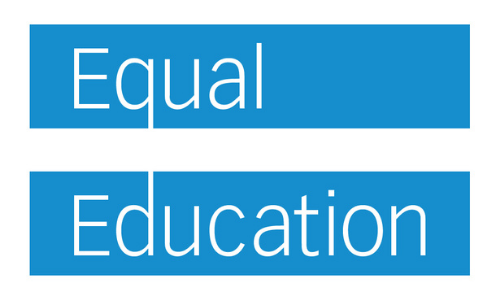Breaking Barriers: Encouraging Girls in STEM Through Inclusive Tutoring
By Soraya Saber
Tutors play an important role in helping every student feel seen, supported, and confident in their learning. While progress has been made, girls are still underrepresented in many Science, Technology, Engineering, and Mathematics (STEM) subjects and may face barriers that limit their opportunities. By creating inclusive and encouraging learning environments, tutors can help challenge these barriers and support girls to pursue, enjoy, and succeed in STEM. Every student should feel that their ambitions are possible and that they can thrive across all fields of study.
The Gender Gap in STEM Education
In the UK, gender disparities in STEM remain a challenge, with girls still underrepresented in subjects like Physics and Computing. In 2024, while girls made up 54% of all A-Level entries, male students earned slightly more A* grades (9.5% for boys vs. 9.1% for girls) (ocr.org.uk). At GCSE level, girls outperformed boys overall, with a higher percentage of girls achieving a grade 4 or above. While in STEM subjects however, the gap widens; with boys performing better in physics and achieving higher grades than girls (WISE).
Many girls opt out of STEM subjects due to differences in attitudes, confidence, and the availability of role models. According to studies, girls enjoy STEM subjects less than boys (32% vs. 59%) and are less likely to think they excel at them (33% vs. 60%), even though they often achieve better grades. While both boys and girls believe STEM careers offer good salaries, fewer girls (51%) than boys (69%) see them as leading to jobs (DFE). This perception may stem from a belief that STEM subjects are "not suitable for them" or a preference for subjects like English.
A lack of female teachers and role models in STEM can make it harder for girls to envision themselves in these careers. However, research shows that when girls pursue subjects like Computer Science, they often enjoy them and perform well. Schools and tutoring programmes can help close the gender gap by:
Introducing girls to STEM at a young age;
Offering clubs, workshops, and hands-on activities to spark interest;
Highlighting female role models from STEM industries;
Encouraging a gender-inclusive tutoring approach that supports all learning styles.
Practical Strategies for Gender-Inclusive Tutoring
Achieving gender equality in education goes beyond STEM. Tutors can take several steps to ensure their teaching methods and materials support all students equally.
1. Challenge Gender Bias in Learning Materials
Learning resources such as textbooks and exam questions, can occasionally reinforce outdated gender roles. Tutors can address this by:
Using diverse examples that highlight contributions from women, men, and non-binary people across various careers;
Identifying stereotypes in case studies and examples and ensuring that narratives don’t reinforce traditional gender norms;
Encouraging critical thinking by discussing how gender bias appears in media, literature, and history.
2. Encourage All Students Equally
Despite progress, gender divides remain in subject choices and career aspirations. For instance, while women make up 57% of UK university students, they are still significantly underrepresented in engineering, computing, and physics degrees (publications.parliament). Meanwhile, men are less likely to pursue careers in education and healthcare.
Tutors can help shift these patterns by:
Providing equal encouragement across all subjects, especially those where students may feel less confident due to gender stereotypes;
Introducing diverse role models, such as female engineers or male primary school teachers, to show that careers aren’t limited by gender;
Challenging assumptions, such as the idea that boys are naturally better at maths or that girls excel in creative subjects.
3. Create a Safe Space for Expression
According to studies, boys and girls often experience different expectations when it comes to participation in the classroom. Girls may be less likely to raise their hands in STEM subjects, while boys might feel pressure to downplay their interest in the arts. Tutors can:
Encourage open discussion, ensuring all students feel comfortable sharing ideas without fear of judgment.
Promote respect in group work, making sure all voices are heard and valued.
Address gendered assumptions, such as discouraging comments like “boys don’t cry” or “girls aren’t good at coding.”
4. Adapt Teaching Methods for Inclusivity
Different students engage with learning in different ways, and tutors should be mindful of how gendered expectations can shape engagement. Studies have shown that teachers may unconsciously call on boys more often in maths lessons or expect girls to take on more organisational roles in group projects. Tutors can:
Use varied teaching strategies to appeal to different learning styles;
Avoid gendered grouping (e.g., separating boys and girls in activities unless necessary);
Reflect on personal teaching habits to ensure all students receive equal attention and encouragement.
Suggested Reading for Tutors
For those who want to explore gender-inclusive education further, here are some UK-based resources:
Challenging Gender Stereotypes in STEM – Resources for the classroom that help girls learn about female role models in Science, Technology, Engineering, and Mathematics (STEM) subjects and support their aspirations and subject choices. (NEU)
"Fostering Gender Inclusivity: Educator Strategies" – Guidance on using inclusive language, challenging stereotypes, and creating a supportive classroom for students of all gender identities. (Notion for Teachers)
"Supporting Trans and Non-Binary Students" – Practical advice from The National Education Union on creating inclusive learning environments. (NEU)
It Starts with You
We still have a long way to go before achieving true gender equality in education. By making small, intentional changes in how we teach, we can help ensure that every student, no matter their gender, feels supported, empowered, and free to pursue their ambitions.
Bibliography
OCR (2024) Results trends 2024: A-Levels. https://www.ocr.org.uk/about/policy-and-public-affairs/articles/results-trends-2024-a-levels/
WISE Campaign (2024) WISE GCSE results 2024. https://www.wisecampaign.org.uk/wise-gcse-results-2024/
UK Government (2019) Attitudes towards STEM subjects by gender at KS4. https://assets.publishing.service.gov.uk/media/5f494064e90e071c78ff79ad/Attitudes_towards_STEM_subjects_by_gender_at_KS4.pdf
UK Parliament (2023) Science and technology committee report. https://publications.parliament.uk/pa/cm5803/cmselect/cmsctech/95/report.html
National Education Union (NEU) Challenging gender stereotypes in STEM. https://neu.org.uk/advice/classroom/teaching-resources/challenging-gender-stereotypes-stem
Notion for Teachers Fostering gender inclusivity: Educator strategies. https://www.notion4teachers.com/blog/fostering-gender-inclusivity-educator-strategies#the-importance-of-a-gender-inclusive-classroom
National Education Union (NEU) Supporting trans and gender-questioning students.https://neu.org.uk/advice/equality/lgbt-equality/supporting-trans-and-gender-questioning-students
